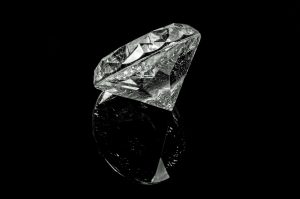Shimon Barbi: What Makes up a Diamonds Clarity
Clarity refers to an objects transparency or purity explain Shimon Barbi. This is a very important characteristic for diamonds. To determine a diamond's clarity the placement, appearance, and number of inclusions, blemishes, or flaws are noted. The number of inclusions, blemishes, or flaws can affect the opacity of the diamond, its sparkle, and its overall brilliance.
The Gemological Institute of America (GIA) is a not for profit institution dedicated to research and education in the field of gemology. The GIA is responsible for creating a gem scale to rate diamonds clarity.

The scale is as follows: by Shimon Barbi
Flawless(FL): This refers to a diamond that does not have any blemishes or inclusions at all when viewed under a 10x magnification by an experienced diamontologist.
Internally Flawless(IF): This refers to a diamond that does not have any inclusions, but may have some minor blemishes when observed by a certified diamontologist under a 10x magnification.
Very Very Slightly Included(VVS1 and VVS2): This refers to a diamond that has very tiny inclusions. These inclusions will be hard, even for an experienced diamontologist, to see when using a 10x magnification.
Very Slightly Included(VS1 and VS2): This refers to a diamond that has very minute inclusions such as small clouds, feathers, or crystals when observed under a 10x magnification.
Slightly Included(SL1 and SL2): This refers to a diamond that has noticeable inclusions such as clouds, feathers, or crystals, that are evident to an experienced diamontologist under a 10x magnification.
Included(I1, I2, and I3): This diamond is often referred to as imperfect. It may contain some inclusions that are fairly apparent to an experienced diamontologist that may be visible without any magnification.
From the above definitions it is easy to tell that you do not want your diamond to have too many inclusions, but what exactly is an inclusion? An inclusion is an internal characteristic that, due to the immense pressure it takes to create a diamond, is often formed during the formation process or caused by an irregularity in the crystal structure. A blemish on the other hand is an external characteristic that can be caused during the formation of the diamond, during the cutting process, or by everyday wear.
There are many different types of inclusions. One common type of inclusion are feathers. Feathers look quite literally like feathers and in some cases extend to the diamonds surface. The diamonds stability can be affected if the feathers extend to the surface of the diamond. Some other types of inclusions are bearding, cleavage, crystals, and pinpoints.
One common type of blemish is naturals. Naturals refer to a part of the diamond that was not polished during the original cutting/polishing phase. Hence they are still natural. Some other examples of blemishes are fracture, nicks, and scratches.
These inclusions and blemishes are not always a bad thing. They are used as a way to identify diamonds. A truly flawless diamond is very hard to find and very expensive as well. It is always a good idea to have your jeweler plot your diamonds characteristics so that you can easily identify it in the future.
About Shimon Barbi Diamonds
Shimon Barbi is the owner of S.E Barbi Diamonds. Shimon Barb
Shimon Barbi is the owner of S.E Barbi Diamonds. Shimon Barbi founded the Israel based diamond company in 1980. The family managed business operates in the manufacture, development, and trading of rough diamonds.
S.E. Barbi Diamonds and it's founder Shimon Barbi have an exceptional track record for their production knowledge and supply of preferred cuts including Princess, Round and Fantasy in every form and measurements. At S.E. Barbi's main cutting and polishing center in Israel, Shimon Barbi and his team make polished diamonds in a wide range from medium to the highest quality. Handled and created from their stock of rough.
Working directly with businesses offering rough diamonds on several continents, S.E. Barbi utilizes its professional understanding and considerable financial resources to represent their interests. Based on their stable business relationships, S.E. Barbi and Shimon Barbi have shown firm stability over the years in ever changing industry conditions.
Due to the company's originality, Shimon Barbi Diamonds can capitalize on the extensive capacity of rough for an all encompassing selection of stones covering all levels of industry quality and price.

S.E. Barb Diamonds is locateded in the center of Israel's International Diamond Exchange, Ramat Gan. Due to S.E. Barbi's impressive scale, more branch offices are based in Antwerp – Belgium, Sydney – Australia, Hong Kong – Asia and New York.
שמעון ברבי (Shimon Barbi), מוזקאי ויוצר. מנגן על מספר כלי נגינה ובזמני הפנוי מלמד מוזיקה, מלחין וכותב על ענייני תרבות ואקטואליה.
- Shimon Barbihttps://anews.co.il/author/shimon-barbi/
- Shimon Barbihttps://anews.co.il/author/shimon-barbi/
- Shimon Barbihttps://anews.co.il/author/shimon-barbi/
- Shimon Barbihttps://anews.co.il/author/shimon-barbi/



















